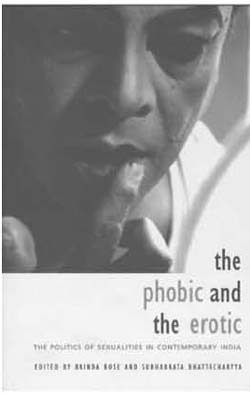Homosexuality, lived out freely and fearlessly, places before the individual and society a real set of imperatives, challenges and opportunities: to put reason and humanity before fear, habit and prejudice; to test our unexamined assumptions regarding some of the basic elements of human life—the family, marriage, parenthood, independence, loneliness, companionship, fidelity, promiscuity … Nobody, one has to remind oneself relentlessly, is too old, or too fragile, to be made to shed the habit of discrimination. [Aveek Sen, PE:15]
These two volumes together inaugurate a momentous turn in feminist writing on sexuality in India—majestically holding up for consideration the uncontainable fluidity of gender, sexuality and desire that change radically with contexts of time and place, marking the shifts in deliberations on sexuality, identity, politics, and intersectionality—for instance, the emergence of desire, the representations of desire, the overt articulation of violence and its subterranean constancy in situations of marginality (e.g. Gayathri Reddy, PE: 301–322). Although the question of sexuality has been a core concern in Indian feminisms for at least three decades, by bringing together these two interdisciplianry, eclectic and reflexive collections, the editors discovered a clearing for an entire corpus on this subject that was to follow and grow in exciting and unimaginable directions. As the first step in this direction, they have an undiminished relevance as foundational texts on gender and sexuality that have provided the reference point for later explorations.
Heteronormativity, despite significant ruptures has ‘produced particular forms of family, gendered identities and desire as natural, eternal, historically progressive, through the mechanisms of law and state and the realm of ideas’ (S: 10). AIDS awareness helped, in Menon’s view, to produce a critical mass of understanding in the public realm in India in 1990s while simultaneously releasing material resources to consolidate organizing on a wider scale. There is of course the underside of the AIDS industrial complex which depends on critical silences and reification of sexual identities.
The understanding of masculinity has been too confined within the dominant codes of heteronormativity, so that the subjugation of male bodies in particular situations remains unarticulated and unexplored. If veiling is expanded beyond a focus on clothing to a system that frames bodily styles, speech forms, gestural codes and spatial locations, veiling by both men and women enables cross sex interaction through a temporary desexualization.

